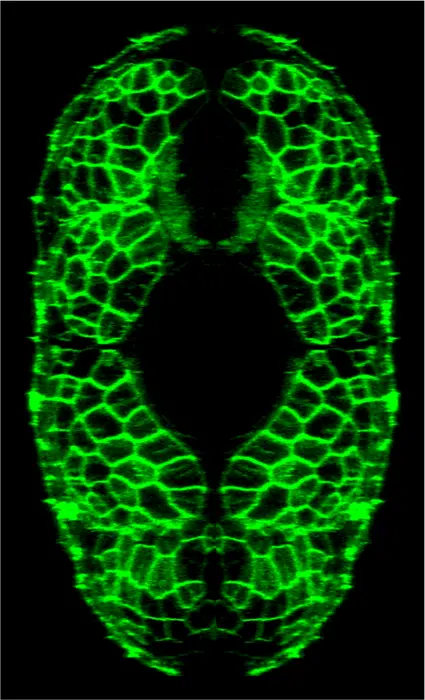Muscle cells are not just the workhorses of movement and strength; they also harbor their own intrinsic circadian clocks that govern critical cellular processes. Recent groundbreaking research from King’s College London illuminates how these internal timekeeping mechanisms regulate muscle health and how their disruption, such as by shift work, accelerates the ageing of muscle tissue. Published in the prestigious Proceedings of the National Academy of Sciences (PNAS), this study deepens our understanding of circadian biology’s fundamental role in muscle maintenance and the pathogenesis of sarcopenia, the age-associated loss of muscle mass and function.
The circadian clock within muscle cells intricately orchestrates the balance between protein synthesis and degradation, which is vital for sustaining muscle integrity. These cellular clocks align physiological functions with the day-night cycle, enhancing muscle repair and function during periods of rest. By employing zebrafish as a model organism, the researchers were able to visualize and manipulate muscle clock activity with high precision, taking advantage of the fish’s genetic similarity to humans and their transparent musculature, which facilitates direct microscopic observation.
Central to the findings is the concept of “nocturnal clearance,” whereby muscle cells activate pathways at night to identify and dismantle defective or damaged proteins accumulated from daily activity. This proteolytic process is crucial to prevent the buildup of dysfunctional proteins that can impair muscle contraction and growth. The study shows that when the muscle clock’s function is compromised, this essential clearance mechanism falters, leading to a premature decline in muscle health characterized by symptoms remarkably similar to those observed in aged individuals and shift workers.
The researchers induced circadian disruption in zebrafish by overexpressing a mutant clock protein that impaired the normal rhythmic function in skeletal muscle cells. Over a two-year observation period, fish with dysfunctional muscle clocks displayed signs of accelerated ageing: decreased body length, reduced weight, diminished swimming speed, and lower activity levels. Such phenotypic changes closely resemble muscle decline in older humans, underscoring a conserved biological mechanism linking circadian dysregulation and sarcopenia.
At a molecular level, the study highlights that the muscle circadian clock governs proteostasis by regulating protein turnover through autophagy and the ubiquitin-proteasome system. During the active phase, muscle proteins endure stress and damage from continuous contraction and metabolic demands. The subsequent nocturnal phase activates catabolic pathways to clear these worn-out proteins, allowing for the synthesis of new, functional proteins. This cyclical renewal process is fundamental for muscle adaptation and longevity.
The implications of these findings extend beyond fundamental biology, addressing a pressing public health concern: shift work. Approximately four million individuals in the UK alone engage in nighttime or rotating shift schedules, often facing circadian misalignment. This research provides compelling mechanistic insight into how such lifestyle factors contribute to muscle degeneration and overall health decline. Muscular sarcopenia in shift workers could be a direct consequence of impaired circadian regulation of muscle cellular homeostasis.
Lead author Jeffrey Kelu explains that modulating the muscle clock pharmacologically may offer therapeutic avenues. Preclinical trials exploring clock-targeted drugs aim to restore nocturnal proteolytic activity and muscle function in circadian-disrupted models. This innovative approach could mitigate the deleterious effects of shift work and ageing on muscle health, improving quality of life for millions worldwide.
In addition to therapeutic potential, this work validates the zebrafish model as an invaluable tool for dissecting complex biological rhythms in muscle biology. Zebrafish genetics and transparent larvae enable live imaging of fluorescently labelled muscle membranes, providing quantitative data on muscle size and integrity. Professor Simon Hughes emphasizes that insights gained from this “simple” system can guide human studies, representing a critical translational bridge in chronobiology research.
The study also stresses the importance of synchronizing various tissue-specific clocks to overall circadian health. While systemic circadian rhythms governed by the central brain clock are well known, peripheral clocks in tissues such as muscle act autonomously to maintain local homeostasis. Disruption of these peripheral clocks, even when the central clock remains intact, can trigger tissue-specific ageing and dysfunction, as demonstrated in muscle.
Furthermore, the research touches upon the broader implications of circadian biology in proteostasis. Impaired clearance of damaged proteins is a hallmark not only of muscle ageing but also of neurodegenerative diseases and metabolic disorders. The muscle clock’s role in regulating proteolytic pathways may therefore have systemic repercussions, linking circadian dysregulation to a wide spectrum of age-related pathologies.
In conclusion, this seminal study provides a detailed mechanistic framework connecting muscle intrinsic clocks, protein turnover, and ageing. By elucidating how circadian disruption accelerates sarcopenia at cellular and organismal levels, it paves the way for targeted chronotherapeutic strategies. As modern societies increasingly depend on 24/7 labor schedules, understanding and mitigating the biological costs of circadian misalignment becomes ever more urgent for public health and longevity.
Subject of Research: Circadian disruption and muscle ageing (sarcopenia)
Article Title: Disruption of Muscle Intrinsic Circadian Clocks Accelerates Age-Related Sarcopenia through Impaired Proteostasis
News Publication Date: Not explicitly provided; article published recently
Web References: http://dx.doi.org/10.1073/pnas.2422446122
References: Study published in Proceedings of the National Academy of Sciences (PNAS), DOI 10.1073/pnas.2422446122
Image Credits: King’s College London
Keywords: Cell biology, circadian rhythms, muscle ageing, sarcopenia, protein turnover, zebrafish model, shift work, proteostasis
Tags: biological clocks and muscle healthcellular mechanisms of muscle repaircircadian biology and agingcircadian rhythms in muscle cellsimpact of nocturnal clearance on muscleimplications of disrupted circadian rhythmsKing’s College London muscle researchmuscle tissue and timekeeping mechanismsprotein synthesis and degradation in musclessarcopenia and muscle functionshift work and accelerated agingzebrafish as a model for muscle studies





